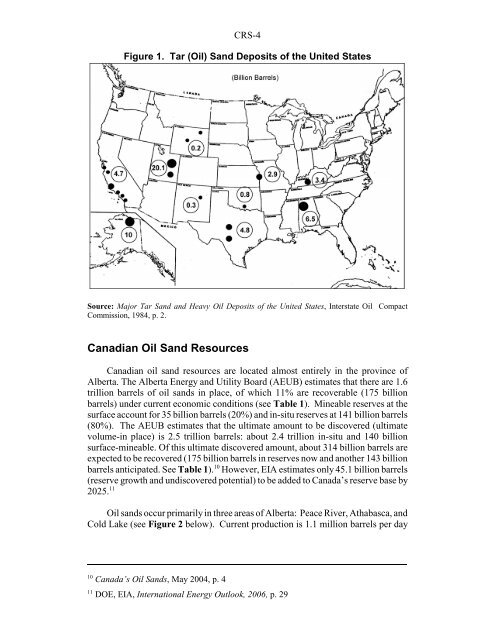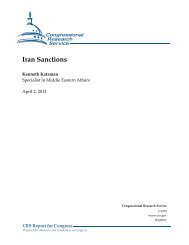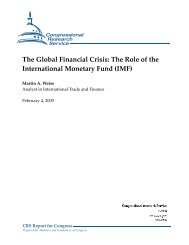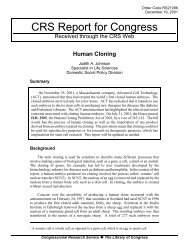North American Oil Sands: History of ... - The Air University
North American Oil Sands: History of ... - The Air University
North American Oil Sands: History of ... - The Air University
You also want an ePaper? Increase the reach of your titles
YUMPU automatically turns print PDFs into web optimized ePapers that Google loves.
10 Canada’s <strong>Oil</strong> <strong>Sands</strong>, May 2004, p. 4<br />
CRS-4<br />
Figure 1. Tar (<strong>Oil</strong>) Sand Deposits <strong>of</strong> the United States<br />
Source: Major Tar Sand and Heavy <strong>Oil</strong> Deposits <strong>of</strong> the United States, Interstate <strong>Oil</strong> Compact<br />
Commission, 1984, p. 2.<br />
Canadian <strong>Oil</strong> Sand Resources<br />
Canadian oil sand resources are located almost entirely in the province <strong>of</strong><br />
Alberta. <strong>The</strong> Alberta Energy and Utility Board (AEUB) estimates that there are 1.6<br />
trillion barrels <strong>of</strong> oil sands in place, <strong>of</strong> which 11% are recoverable (175 billion<br />
barrels) under current economic conditions (see Table 1). Mineable reserves at the<br />
surface account for 35 billion barrels (20%) and in-situ reserves at 141 billion barrels<br />
(80%). <strong>The</strong> AEUB estimates that the ultimate amount to be discovered (ultimate<br />
volume-in place) is 2.5 trillion barrels: about 2.4 trillion in-situ and 140 billion<br />
surface-mineable. Of this ultimate discovered amount, about 314 billion barrels are<br />
expected to be recovered (175 billion barrels in reserves now and another 143 billion<br />
barrels anticipated. See Table 1). 10 However, EIA estimates only 45.1 billion barrels<br />
(reserve growth and undiscovered potential) to be added to Canada’s reserve base by<br />
2025. 11<br />
<strong>Oil</strong> sands occur primarily in three areas <strong>of</strong> Alberta: Peace River, Athabasca, and<br />
Cold Lake (see Figure 2 below). Current production is 1.1 million barrels per day<br />
11 DOE, EIA, International Energy Outlook, 2006, p. 29











